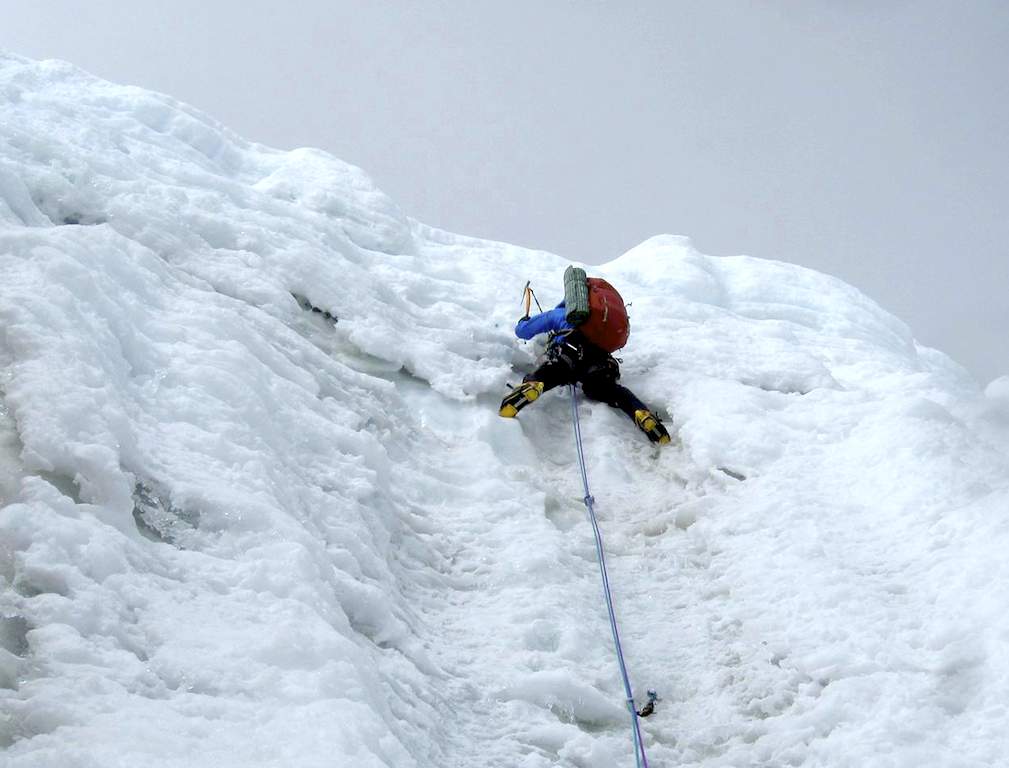Singu Chuli (6,501m), South-Southeast Ridge to South Ridge
Nepal, Annapurna Himal
 On November 3-4 Cas van den Gevel and I climbed the south-southeast face of Singu Chuli. We reached the south ridge at 6,350m but found the crest above so heavily fluted and corniced that we deemed it too dangerous to continue to the summit.
On November 3-4 Cas van den Gevel and I climbed the south-southeast face of Singu Chuli. We reached the south ridge at 6,350m but found the crest above so heavily fluted and corniced that we deemed it too dangerous to continue to the summit.
Our base camp was placed at 4,500m on the approach to the normal route on Tharpu Chuli (5,663m) from the south-southwest. From here it took one-and-a-half days to reach the foot of the face. We climbed to the col on the ridge separating Tharpu Chuli from Pancha Chuli to the north, where we spent the night. On November 3 we followed the crest of the ridge north until it became steep and rocky. At this point we descended the east flank (one rappel at the bottom), crossed the glacier, and climbed up to the foot of Singu Chuli. Due to the middle and right side of the face having large seracs, we opted for a line on the left, very close to that climbed by Slovenians in 1995.
The same day we climbed the first 300m of face, bivouacking at 5,900m. The next day we reached the crest of the south ridge and descended to our bivouac. The route was TD/TD+ with ice up to 90°. From there it took two days to return to base camp, first southeast down the West Annapurna Glacier and then via the South Annapurna Glacier.
Our original intention had been to repeat the Ghilini-Maclntyre-Porter route on the west face. However, there is some uncertainty as to the exact location of this line, and the approach across the glacier was horrendously broken. During an acclimatization ascent of Tharpu Chuli we could see that the south-southeast face presented much better conditions.
William van Meegdenburg
Editor’s note: in October 1995 Ziga Petric and Bojan Pockar climbed the face via a line fractionally to the right of that taken by the Dutch. Toward the top they found sections of 75-80° and UIAA VI on rock. The last pitch to the crest of the south ridge was the crux (VI+ rock and vertical ice). Above, a very unstable, dangerous and corniced crest led to the summit. Unable to reverse their ascent, they were forced to rappel directly down the face, exposed to serac fall. They named their route Perun (ED2). The Dutch noticed two sections of old fixed rope on the rock spur to their left, and a third below their exit point on the summit ridge, seemingly emerging from the rock spur. The origins of these are currently unknown. Singu Chuli was first climbed in 1957 by David Cox and Wilfred Noyce via the east ridge, but despite its current status as a “trekking peak”, this mountain is infrequently ascended.





